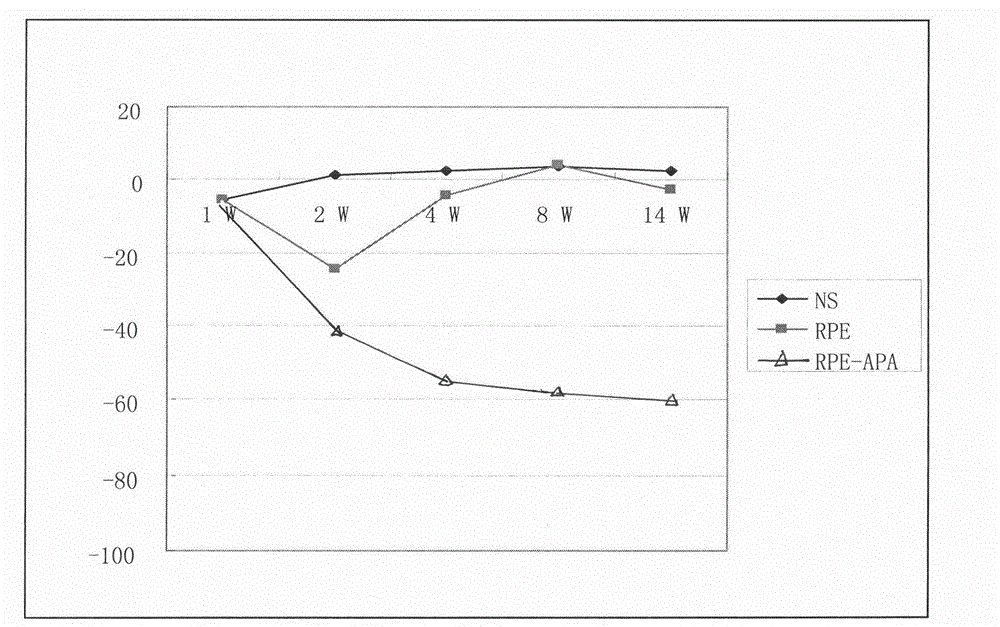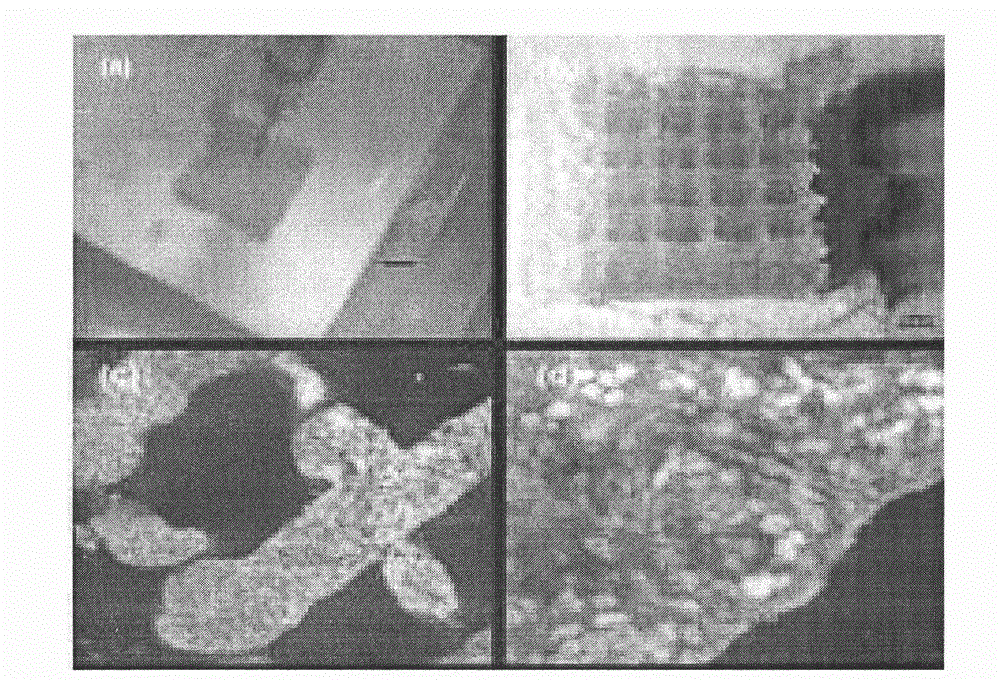Cell microcapsule for treating parkinsonism and composite cytoskeleton
A Parkinson's disease and microcapsule technology, applied in the field of cell microcapsules and composite cell scaffolds for the treatment of Parkinson's disease, can solve the problem of not seeing, prolonging the survival period of transplanted cells, and not seeing immune rejection of cytochrome epithelial cells, etc. To achieve the effect of prolonging the survival period, improving the success rate and cell survival rate, and continuously secreting dopamine
- Summary
- Abstract
- Description
- Claims
- Application Information
AI Technical Summary
Problems solved by technology
Method used
Image
Examples
Embodiment 1
[0039] Example 1. Subculture of retinal pigment epithelial cells.
[0040] Primary retinal pigment epithelial cells were purchased from ScienCell, USA
[0041] The culture medium used is the EpiCM medium (EpiCM, Catalog Number is 4101) of U.S. ScienCell Company, and this medium component is that every 500ml medium contains 10ml fetal bovine serum FBS (Catalog No.0010), 5ml epithelial cell nutrient (Catalog No.4152) and 5ml penicillin streptomycin antibody (P / S, Catalog No.0503).
[0042] Cells were subcultured using 0.25% Trypsine as a digestion solution. The purchased primary cells are packed in 75cm2 culture flasks, placed at 37°C, 5% CO 2 Cultured in an incubator, the culture medium was changed every 3 days until the cells were confluent and passaged.
[0043] When the cells divide and proliferate to confluence, they should be subcultured in time, absorb the culture medium, wash with PBS buffer 3 times, digest with 0.25% trypsin for 3-5 minutes, observe under the inverte...
Embodiment 2
[0044] Example 2: Preparation of gelatin microspheres containing neurotrophic factors by single coacervation method
[0045] Prepare 5 ml of gelatin solution with a mass fraction of 20%, and sterilize it in an oven at 80° C. for 2 to 3 times, each time for 4 to 5 hours. Add 100ug neurotrophic factor (ScienCell, NGS, Catalog No.1562) under sterile conditions, add acetone dropwise at pH 3.8 to coagulate the gelatin solution, and then add glutaraldehyde to cross-link to obtain a smooth surface with a diameter of 200-400nm gelatin microspheres.
Embodiment 3
[0046] Embodiment 3. making sodium alginate-polylysine-sodium alginate cell microcapsules
[0047] Step 1. get the 75cm made in embodiment 1 2 Culture flasks grow close to confluent 3rd to 5th passage retinal pigment epithelial cells at a cell concentration of 8×10 6 ~10×10 6 / L
[0048] Step 2. Extract the cells, suck off the culture medium, add 0.25% trypsin to digest for 3-5 minutes, add culture medium (EpiCM, CatalogNumber is 4101) to stop, blow and mix well, centrifuge and discard the supernatant to obtain RPE .
[0049] Step 3, mix RPE with 1.5% sodium alginate to make a density of 1×10 6 / ml of cell suspension. Drop the cell suspension into gently agitated 1.1% CaCl with a No. 4 needle 2 , allowing it to form gel beads.
[0050] Step 4, the neurotrophic factor microspheres prepared in Example 2 are mixed with 0.05% polylysine in equal volumes,
[0051] Step 5. The gel beads are reacted sequentially with the mixture in step 4 and sodium alginate, and finally the ...
PUM
| Property | Measurement | Unit |
|---|---|---|
| diameter | aaaaa | aaaaa |
Abstract
Description
Claims
Application Information
 Login to View More
Login to View More - R&D
- Intellectual Property
- Life Sciences
- Materials
- Tech Scout
- Unparalleled Data Quality
- Higher Quality Content
- 60% Fewer Hallucinations
Browse by: Latest US Patents, China's latest patents, Technical Efficacy Thesaurus, Application Domain, Technology Topic, Popular Technical Reports.
© 2025 PatSnap. All rights reserved.Legal|Privacy policy|Modern Slavery Act Transparency Statement|Sitemap|About US| Contact US: help@patsnap.com


